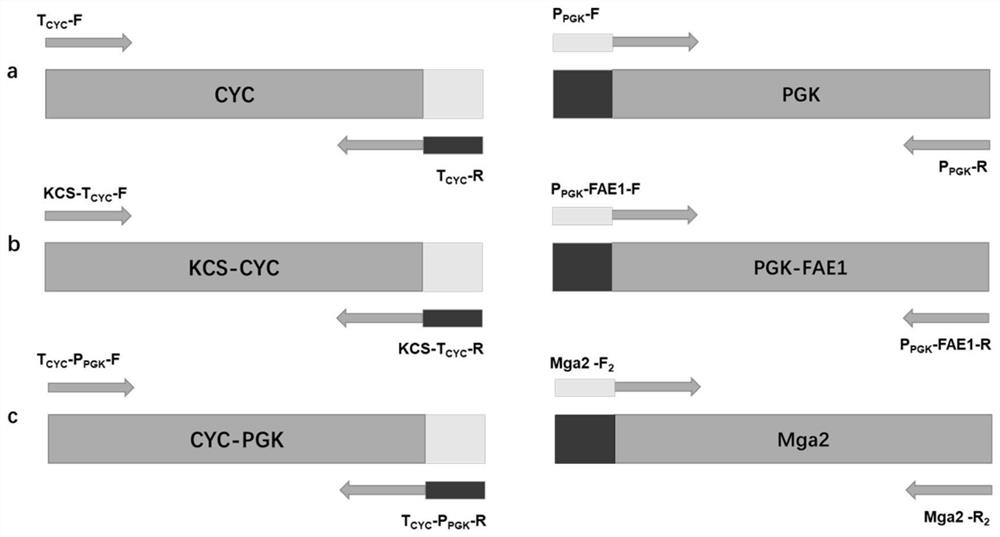Method for increasing content of palmitoleic acid in saccharomyces cerevisiae
A technology of Saccharomyces cerevisiae and palmitoleic acid, applied in the biological field, can solve the problems such as the unclear regulation function and the inability to activate the expression of fatty acid dehydrogenase
- Summary
- Abstract
- Description
- Claims
- Application Information
AI Technical Summary
Problems solved by technology
Method used
Image
Examples
Embodiment 1
[0056] Example 1, the effect of overexpression of transcription factor Mga2 on palmitoleic acid content of Saccharomyces cerevisiae
[0057] 1. Construction of overexpressed transcription factor Mga2 genetically engineered bacteria
[0058] 1. Construction of Mga2 overexpression vector
[0059] Use the standard yeast extraction kit of Bomed Company to extract the yeast genome to clone the Mga2 gene, select two restriction sites of BamHI and SmaI and connect it to the vector YEplac112 with a strong promoter of Saccharomyces cerevisiae PGK promoter and a CYC terminator -P PGK -T CYC (Shanghai Zeye Biotechnology Co., Ltd., ZY1369).
[0060] The successfully ligated plasmids were transferred into Trans10 competent cells for verification screening and amplification of the plasmids. Pick a single colony grown on the plate for colony PCR verification, select a single colony with successful PCR verification and insert it into an LB test tube with Amp resistance for about 12 hours,...
Embodiment 2
[0095] Example 2. Effect of Overexpression of Mga2 Transcription Factor and Simultaneous Expression of Fatty Acid Elongase Genes KCS and FAE on Palmitoleic Acid Content of Saccharomyces cerevisiae
[0096] 1. Construction of overexpressed Mga2 transcription factor and simultaneous heterologous expression of fatty acid elongase gene KCS and FAE genetically engineered bacteria
[0097] Fatty acid elongase genes KCS and FAE are from the foreign plants Michelina and Crabapple and are not easy to obtain. Therefore, the sequences were sent to Suzhou Jinweizhi Co., Ltd. for direct synthesis and ligated in YEplac112-P PGK -T CYC on the carrier.
[0098] The nucleotide sequence of the fatty acid elongase gene KCS is sequence 2 in the sequence listing;
[0099] The nucleotide sequence of the fatty acid elongase gene FAE is sequence 3 in the sequence list.
[0100] 1. Construction of MGA2 and KCS dual-gene expression engineering strain YS07
[0101] pYES2-P TEF1 -MGA2 706aa -T CYC...
PUM
 Login to View More
Login to View More Abstract
Description
Claims
Application Information
 Login to View More
Login to View More - R&D
- Intellectual Property
- Life Sciences
- Materials
- Tech Scout
- Unparalleled Data Quality
- Higher Quality Content
- 60% Fewer Hallucinations
Browse by: Latest US Patents, China's latest patents, Technical Efficacy Thesaurus, Application Domain, Technology Topic, Popular Technical Reports.
© 2025 PatSnap. All rights reserved.Legal|Privacy policy|Modern Slavery Act Transparency Statement|Sitemap|About US| Contact US: help@patsnap.com



